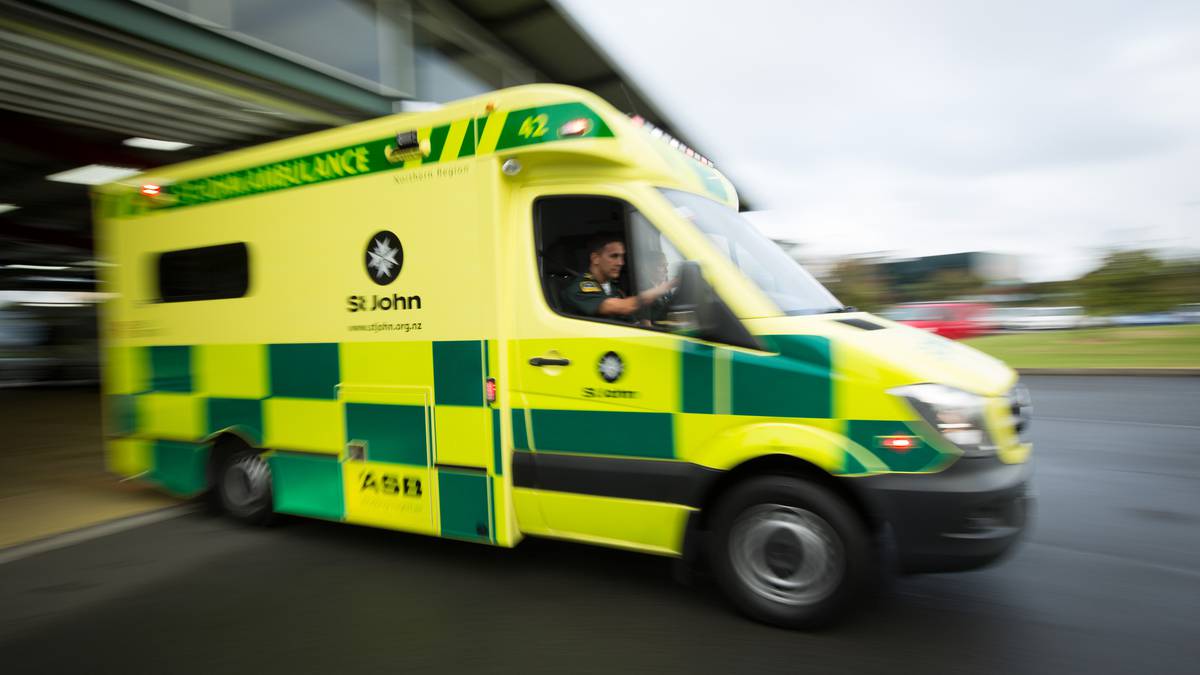St John Ambulance staff are dealing with an increased number of emergency calls in Northland. Photo / NZME
Northland ambulance staff are under increasing pressure with a higher workload, not just this winter but over the last few years.
St John Ambulance data for the last three years show an increase in calls
in the region from 31,263 in 2019 to 33,773 in 2021.
The three most common reasons for ambulance calls last year were referrals from health practitioners, followed by falls/traumatic back injuries and chest pain.
Breathing problems and unspecified “sick person” were the fourth and fifth most common reasons.
First Union ambulance co-ordinator Faye McCann said the workload for ambulance staff has increased since last year, with Omicron and flu having a big impact.
“It’s always really hard for them to see when they get assigned to jobs – and it seems to be job after job – there’s a lot of pressure that comes with that knowing the patients have been waiting so long.”
St John Mid-North area operations manager Wally Mitchell said the number of callouts was “in line with anticipated demand” for winter.
/cloudfront-ap-southeast-2.images.arcpublishing.com/nzme/M7RCJQM7JKYHZS63MYBZK2AQSQ.jpg)
“We are seeing an increasing proportion of our calls related to influenza-like-illness and breathing problems,” he added.
McCann said the union had been contacted by a number of members concerned about short-staffing.
“Overall there’s quite a few vacancies, there’s obviously quite a few people who have been off either because they’re sick, because they’ve got Covid or they’re just fatigued from the overall workload.
‘It’s obviously been a very long time with Covid, there’s no end to it, the winter workload is getting up there and people who are needing a break are having their leave declined because there’s not enough staff to cover the leave.”
/cloudfront-ap-southeast-2.images.arcpublishing.com/nzme/HUKV3SZZYF33CLDFEKAKZVOQBU.jpg)
McCann said the ambulance sector had been struggling with staffing levels even before Covid hit.
“I understand that it’s difficult now they’re in this situation and they can’t find the staff but at the same time it’s frustrating for those people on the ground who thought this was going to happen.”
A number of paramedics had left the job in recent years to work in other areas where they could be better paid and have better working conditions, such as at Healthline, McCann said.
The number of referrals from health practitioners fell from 5922 in 2019 to 5285 in 2021, but still made up 16 per cent of ambulance calls.
/cloudfront-ap-southeast-2.images.arcpublishing.com/nzme/SJ5BLXCVPFTMZOKWGQKRSXAUH4.jpg)
Whangārei GP Geoff Cunningham said he and his colleagues most often call ambulances for patients when they are presenting with chest pains or heart problems and are unable to drive themselves to hospital.
“Our demographic here in Northland is stretching the health system in general. I think the waits [for ambulances] are getting longer but I’m more than aware of just how busy they are.”
Recent growth in the number of retirees in the region has put more pressure on the health system, Cunningham said.
The number of calls to the ambulance service for people with chest pain in Northland has increased from 2675 in 2019 to 3414 last year. The data did not include patient ages.
“They do a fantastic job but the pressures that they’re under are exceptional,” Cunningham said of St John Ambulance staff.
The number of ambulance callouts rose at a national level as well as in Northland.
According to St John’s 2021 national report, there were 581,958 emergency calls for an ambulance between June 2020 and June 2021.
This was up by more than 35,000 calls compared with before the pandemic.
Mitchell said St John had put in place measures to deal with the increased workload over winter.
“In response to the winter surge, St John has stood up a small Emergency Operations Centre [EOC] to monitor workload across the country and is adding or moving resources as required to meet demand.
“Our own people and their dependants are of also course susceptible to winter illness, so staff wellbeing remains a key priority for us.”
Mitchell asked people to take measures to stay healthy and help prevent the ambulance service from becoming overwhelmed, such as washing hands, getting the flu jab and staying home when sick.




